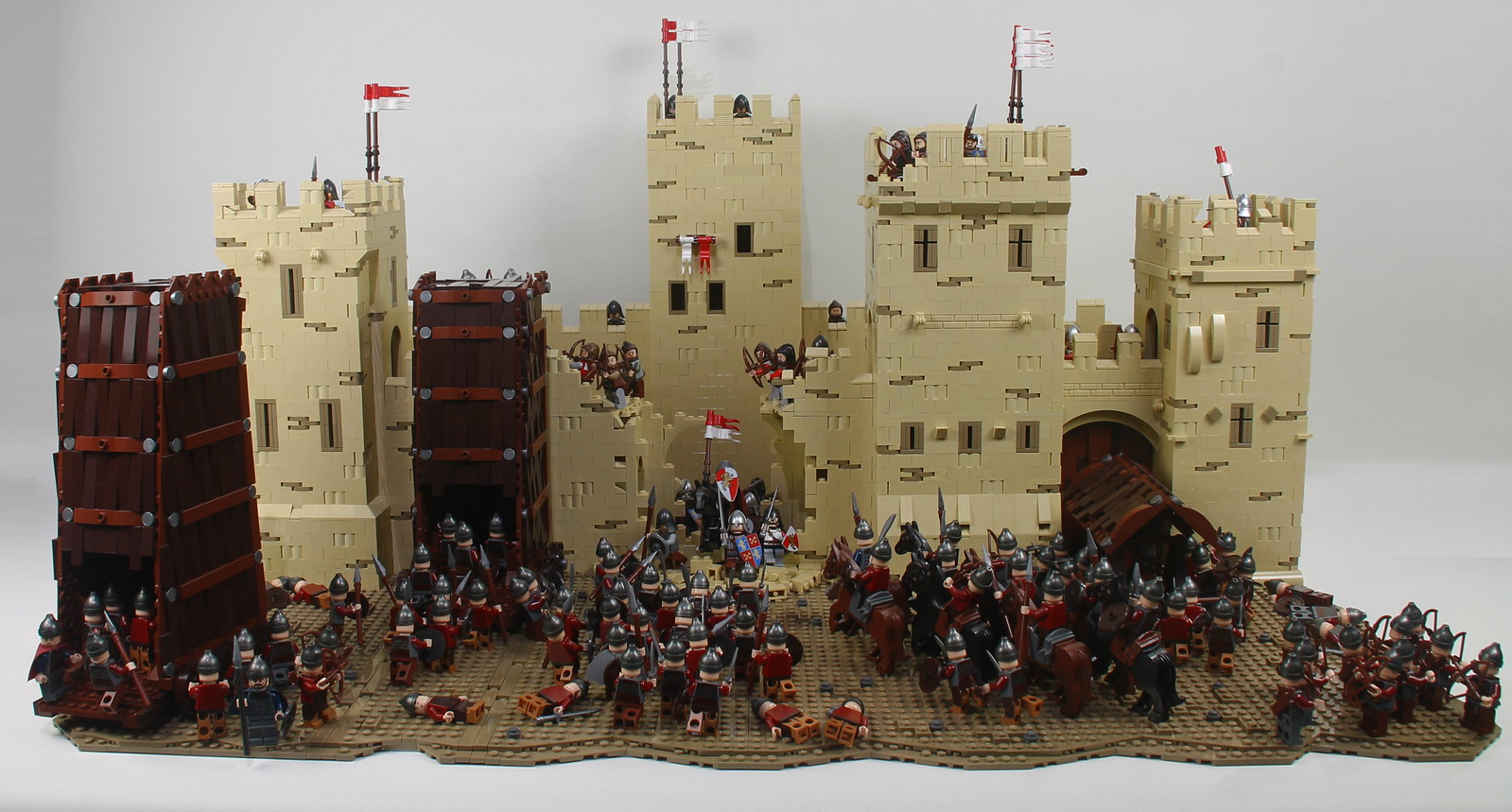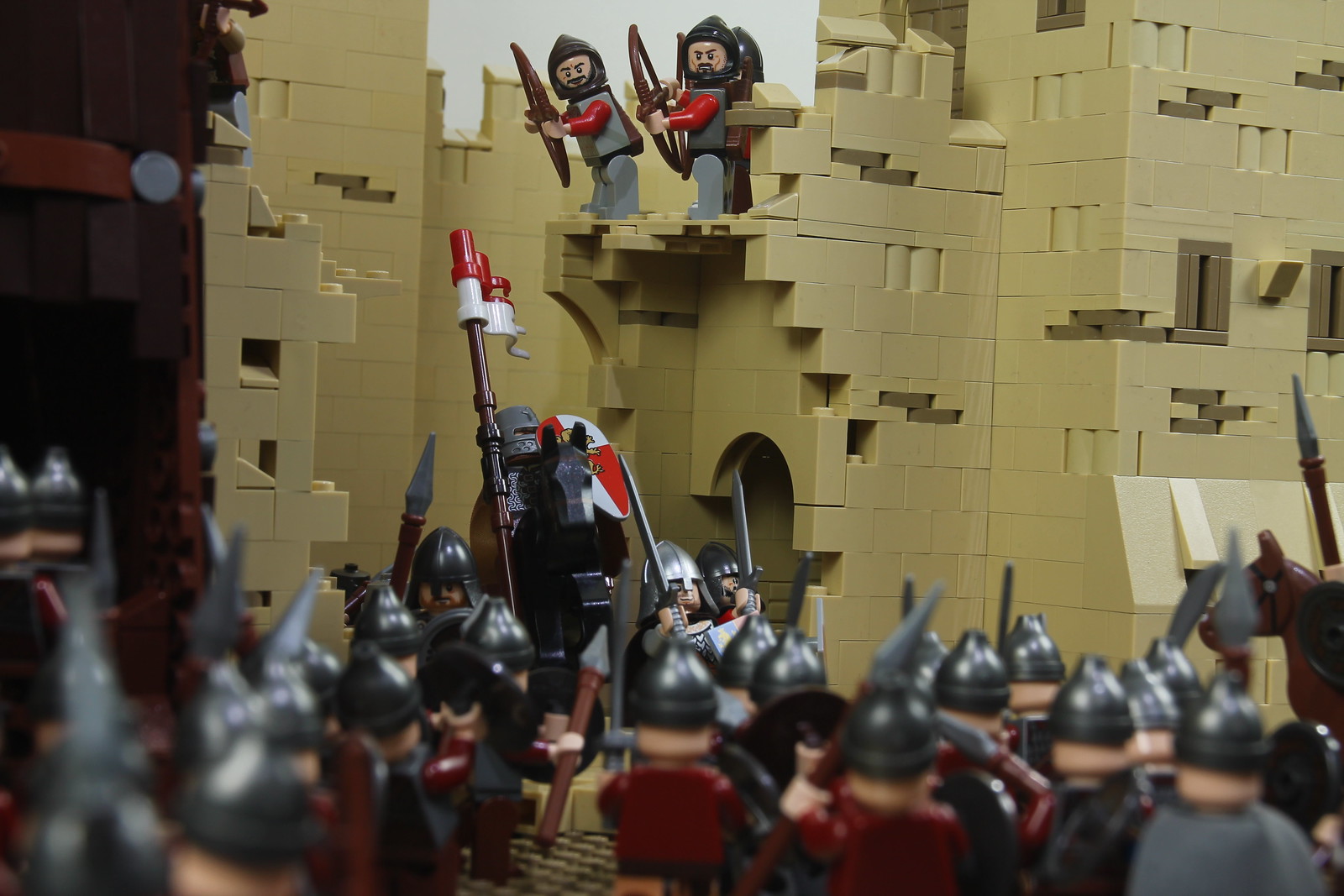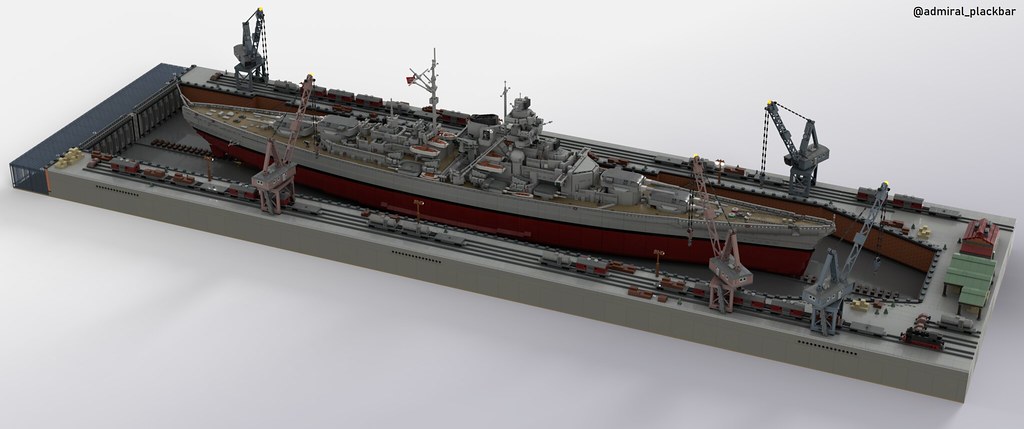When I first saw this magnificent LEGO sculpture by Ekow Nimako, I knew it had to be his. The elegant, all-black theme is his trademark. But what I didn’t realize is that this is much more than a beautiful fictitious character. This is Anansi, an important deity in West African mythos. Ekow has a wonderful talent for pulling you in and inspiring you to look further, both literally and figuratively. So I’m here to share the gift of what I learned… and you might want to zoom in.
Tag Archives: History
Battle of the Crusaders
I’m a big fan of seeing historical events recreated in LEGO form. Today’s moment from history is the Siege of Jerusalem, shown here by builder Marco den Besten.
In the year 1187, the armies of Saladin laid siege to the Crusader stronghold of Jerusalem. At the point of the attack depicted above, the walls of the city have been breached. Marco’s use of dark and sand-colored bricks helps establish the Middle Eastern look of the setting. I also admire his woodwork on the siege towers and battering ram tunnel.
The walls are equally impressive, with various bricks serving as weathered stone that has stood through the ages. The arrowslits are well-designed. I like how there are two different versions of them.
As brave as these Crusaders might be, I don’t think they stand a chance against Saladin’s forces.
Building the Mighty Bismarck!
The most infamous battleship of all time is the German warship Bismarck, as seen here in a masterfully-built drydock. Builder Admiral_Plackbar held nothing back when constructing this floating colossus.
Named after the former German chancellor, Otto von Bismarck, this warship put terror into the hearts of Allied sailors on both sides of the Atlantic Ocean during the Second World War. First, put to sea by Germany in 1939, the Bismarck was one the largest battleships in the world and the largest fielded in the Atlantic. However, the Bismarck only lasted for two years. The ship was lost during a battle against Britain’s Royal Navy in 1941.
Crafted in LEGO by Admiral_Plackbar at 1:155 scale, the brick Bismarck can take on any LEGO pirate ship on the high seas. The detail seen here is incredibly accurate to the real warship, from the gun emplacements to the cranes ready to launch the lifeboats. You can tell that a lot of research went into making this.
And let’s not forget about the drydock! This too is very accurate for the 1930s-40s time era. I especially like the train cars, using a vintage European design of passenger coaches and steam engines. The drydock cranes are also to scale, enabling swift delivery of munitions from the railway to the warship. Everything has a functional purpose.
Admiral_Plackbar stated on Flickr that he is open using the drydock and Bismarck model as part of a larger modular display. I can’t wait to see if that happens!
LEGO celebrates 25th anniversary of LEGO video games with 10-part Bits N’ Bricks podcast [News]
December 2020 marks the 25th anniversary since the LEGO company’s first video game released. To celebrate the milestone, the company has produced a 10-part podcast series called Bits N’ Bricks that walk through the history of the plastic brick company’s foray into digital games, from Minecraft to LEGO Island and the LEGO Star Wars games, and everything in between. LEGO says they’ve been working on the show for more than a year, and have interviewed at least 120 people and researched more than 50 games in the course of production. The podcasts will be released weekly, with the inaugural episode launching today. The first episode is actually a teaser that’s not part of the main 10-part series, and along with a Christmas special in a few weeks, means the whole series will run for 12 weeks.
 The podcast will be hosted by journalist Brian Crecente and documentarian Ethan Vincent. Crecente has a long history with video game journalism, having founded Kotaku and co-founded Polygon, and Vincent likewise has an impressive resume as an Emmy Award-winning documentary director for PBS.
The podcast will be hosted by journalist Brian Crecente and documentarian Ethan Vincent. Crecente has a long history with video game journalism, having founded Kotaku and co-founded Polygon, and Vincent likewise has an impressive resume as an Emmy Award-winning documentary director for PBS.
Check out the timeline below to double-check your own LEGO video games knowledge, and you can read the whole press release and check out a gallery of images from classic LEGO games. Most of us probably thought LEGO Island was the first video game with the LEGO logo, but actually the original LEGO video game, released in 1995, was an educational game produced by SEGA for the Japanese market called Fun to Build. It was followed two years later by the much better known LEGO Island. Continue reading
LEGO’s next book will be “The Secret Life of LEGO Bricks” [News]
Last month, fans of LEGO were invited to vote on one of three titles for the next book the company will publish. The votes are in, and “The Secret Life of LEGO Bricks” took the top spot. The book is targeted at Adult Fans of LEGO (AFOLs) and will be published by the LEGO Group’s publishing partners Unbound and AMEET. The book will be crowdfunded starting today with expected availability in Spring 2022.
“The Secret Life of LEGO Bricks” will feature interviews with the designers, managers and technicians who brought them to life. The book will be written by Daniel Konstanski, the US Editor for Blocks Magazine. Of note, the press release also mentions rewards for crowdfunding backers including a print of the original LEGO wooden duck and several retired LEGO sets with specifics to be revealed soon.
A new perspective on a Leonardo da Vinci masterpiece
It’s 1496 in Milan, Italy and the renowned artist and inventor Leonardo da Vinci is finishing up his latest commission, a fresco spanning the wall of the Convent of Santa Maria delle Grazie. Over the years, “The Last Supper” has become a symbol of the Renaissance art movement. More recently, it has been recreated as a LEGO vignette by Joe (jnj_bricks). In this stunning rendition of da Vinci’s masterpiece, Joe creates the appearance of a two-dimensional fresco with the illusion of three-dimensionality using three-dimensional LEGO bricks– it’s mind-boggling!
Let’s take a look at some of Joe’s illusionistic building techniques in “The Last Supper”. First, the floor in the fresco is built slanting upwards. This creates a deep shadow underneath the table, reminiscent of da Vinci’s chiaroscuro technique of contrasting light and shadow in his oil paintings. Next, the walls of the room within the fresco are built using slope bricks instead of standard 1x bricks, making the “back wall” appear to be much farther away than it actually is. Finally, the bordering brick “window” that frames the fresco completes the composition. Early illusionistic wall paintings that date back to ancient Rome would also use this technique to portray a vista into another world.
All of these techniques enhance the forced perspective in the overall build, creating a convincing replica of the real-life fresco. With the amount of realistic details and artistic techniques packed in this build, it’s hard to believe Joe hasn’t apprenticed for the Renaissance master builders!
Self-isolation means more build time
This time of social distancing and self-isolation is the perfect time to build new LEGO creations. James Pegrum took this time to build a small scene from the Spanish Flu pandemic of 1918-1920. While there isn’t a whole lot going on in the picture, there are some nice little designs for rafters, hanging sheets, and early hospital beds. Aside from the build itself, the subject matter is what’s important today. The patient here is doing what the nurse is telling him to do. We all need to do the same. We’re going to get through this by listening to public health officials. One of the loudest messages I’ve heard is to stay home if you can, which is the perfect time to come up with more amazing LEGO creations!
A History of LEGO Education, Part 3: Mindstorms over matter [Feature]
LEGO Education is celebrating its 40th anniversary, and we are exploring the history of this unique division of the LEGO Group. Part 1 presented an early history of LEGO Education, while Part 2 outlined the development of the first LEGO robotics platforms. In our 3rd and final installment, we dive into the story behind the game-changing release of LEGO Mindstorms.
Click to learn more about the historic launch of LEGO Mindstorms
A History of LEGO Education, Part 2: Path to Mindstorms [Feature]
LEGO Education is celebrating it’s 40th anniversary! As a birthday gift, we are commemorating the occasion with a three-part history feature on this special division of the LEGO Group. Part 1 provided an overview of the history of LEGO education from the 1980s through 1990s, but we left out an important component of the story. Part 2 picks up where we left off, covering the beginnings of LEGO’s programmable robots in the classroom and at home. These were the precursors of LEGO Mindstorms!

Learn more about the prestigious lineage of LEGO robotics platforms released before LEGO Mindstorms
A History of LEGO Education, Part 1: Strong Foundations [Feature]
LEGO bricks have long been considered an educational toy, but it wasn’t until 1980 when The LEGO Group formally established an educational division. Known today as LEGO Education, the division is celebrating 40 years of collaborating with and developing educational tools for teachers around the world, with products ranging from Duplo to Mindstorms. Here at The Brothers Brick, we are taking a closer look at LEGO Education with a series of articles, and what better way to observe a 40th anniversary than with a history of the subject?
To get everyone pumped up, LEGO created a special video highlighting some of the key points behind the history of LEGO Education. Think of the video as a preview of the history we are about to cover here. Get ready, because it’s time to dive deep into LEGO Education 101!
Fabian’s marvelous marbled bricks [Feature]
Last week, we showed you more of Beryll Roehl’s wonderful LEGO test brick photographs. Today, we’re going to look at Norwegian collector Fabian Lindblad and his equally enjoyable snapshots of marbled bricks. Marbled bricks are named such after the swirls of different colored plastic they contain. Some elements are intentionally marbled for sets, while others are the result of changing over the plastic in a mold from one color to another. In the past, LEGO employees occasionally took them home to share with their children. Today, the standard procedure is to recycle them so they don’t leave the building. However, if you are really lucky, you might just find a marbling error in one of your latest sets.
See more awe-inspiring images of these highly collectible bricks
Commemorating the Peterloo Massacre
August of this year marked the 200th anniversary of the Peterloo Massacre. To commemorate the massacre, James Pegrum, Dan Harris and Simon Pickard collaborated to build a LEGO diorama of the event. In their research on the subject, the team consulted an expert historian and the creators of a graphic novel depicting the Peterloo Massacre. They tried to recreate everything as accurately as possible.












